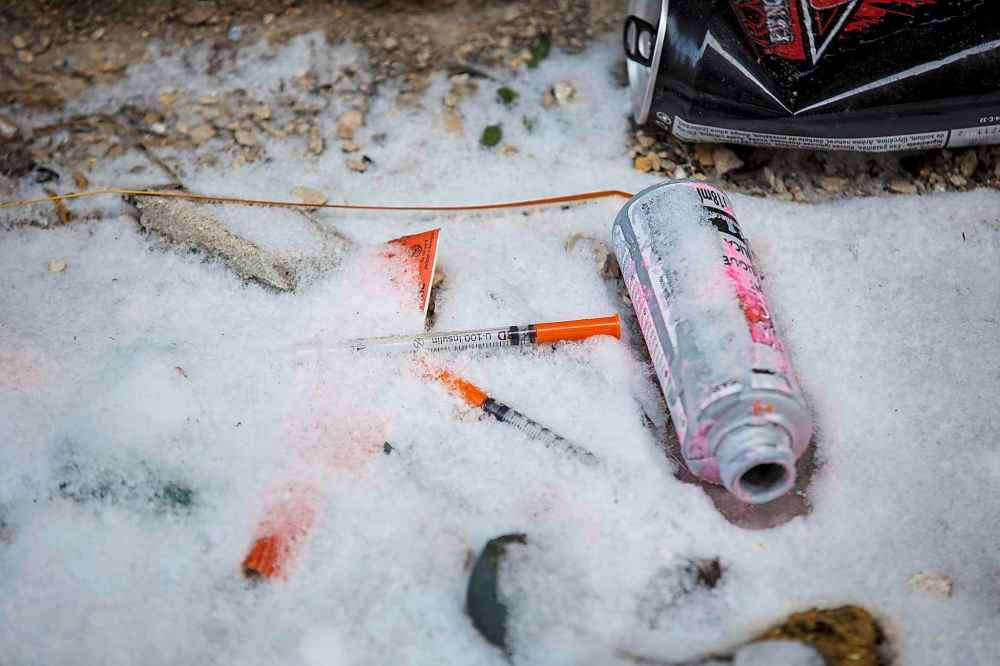No end to meth problem without addressing roots of misery: report on inner city
Advertisement
Read this article for free:
or
Already have an account? Log in here »
To continue reading, please subscribe:
Monthly Digital Subscription
$0 for the first 4 weeks*
- Enjoy unlimited reading on winnipegfreepress.com
- Read the E-Edition, our digital replica newspaper
- Access News Break, our award-winning app
- Play interactive puzzles
*No charge for 4 weeks then price increases to the regular rate of $19.00 plus GST every four weeks. Offer available to new and qualified returning subscribers only. Cancel any time.
Monthly Digital Subscription
$4.75/week*
- Enjoy unlimited reading on winnipegfreepress.com
- Read the E-Edition, our digital replica newspaper
- Access News Break, our award-winning app
- Play interactive puzzles
*Billed as $19 plus GST every four weeks. Cancel any time.
To continue reading, please subscribe:
Add Free Press access to your Brandon Sun subscription for only an additional
$1 for the first 4 weeks*
*Your next subscription payment will increase by $1.00 and you will be charged $16.99 plus GST for four weeks. After four weeks, your payment will increase to $23.99 plus GST every four weeks.
Read unlimited articles for free today:
or
Already have an account? Log in here »
Hey there, time traveller!
This article was published 11/12/2019 (2193 days ago), so information in it may no longer be current.
Disparities in education, social resources and economic opportunity for people living in Winnipeg’s core are highlighted in a report on mental health and drug use in the inner city.
The Manitoba branch of the Canadian Centre for Policy Alternatives released its 15th State of the Inner City report Wednesday, and is calling on policy-makers to consider the roots of substance abuse in addressing methamphetamine use and addiction.
“We must create communities where people can experience a sense of hope, belonging, meaning and purpose in their daily lives, otherwise we will continue to fight an uphill battle,” report author Ellen Smirl said in a statement.

The project, entitled Forest for the Trees: Reducing Drug and Mental Health Harms in the Inner City, pulls together insight from three researchers and examines inequalities in responses to drug-related harm and substance use, the media framing of a meth crisis and community-led action on meth use.
Within the report, Smirl says the provincial government is relying on contradictory reports to guide its public-health response to substance use and mental health, namely the Safer Streets Safer Lives strategy, the Improving Access and Coordination of Mental Health and Addictions Services strategy (also known as the VIRGO report), and the Illicit Drug Task Force Report.
“These contradictions also raise questions about which vision is informing action; which recommendations will be prioritized; as well as important questions around accountability and transparency,” Smirl writes.
Where the VIRGO report calls for a health system that offers addictions and mental-health services within a a harm-reduction framework, other provincial strategies put the emphasis on policing and a “tough on crime” approach to deal with substance abuse, according to CCPA-Manitoba.
“Current government responses do not address adequately the structural harms which create the conditions under which many mental health and drug-use harms are experienced,” CCPA-Manitoba said.
“The presentation of meth is a symptom of a much larger social crisis and a failure by government to address the basic needs of people who experience the highest level of marginalization.”
The report’s authors issued seven recommendations to address their concerns, including: official drug strategies developed by the City of Winnipeg and the provincial government that are complementary and informed by public-health and harm-reduction principles; the city and province committing to address inequalities in social determinants of health; that an official harm-reduction policy be established at municipal and provincial levels; and sustained, multi-year, core funding for community organizations.
“In terms of prevention, if we are serious about preventing problematic substance use within communities that experience high levels of social and economic marginalization, we will receive better value or public funding by reducing the inequalities of the social determinants of health,” Smirl states.
danielle.dasilva@freepress.mb.ca
State of the Inner City: Reducing Drug and Mental Health Harms in the Inner City of Winnipeg

Our newsroom depends on a growing audience of readers to power our journalism. If you are not a paid reader, please consider becoming a subscriber.
Our newsroom depends on its audience of readers to power our journalism. Thank you for your support.


